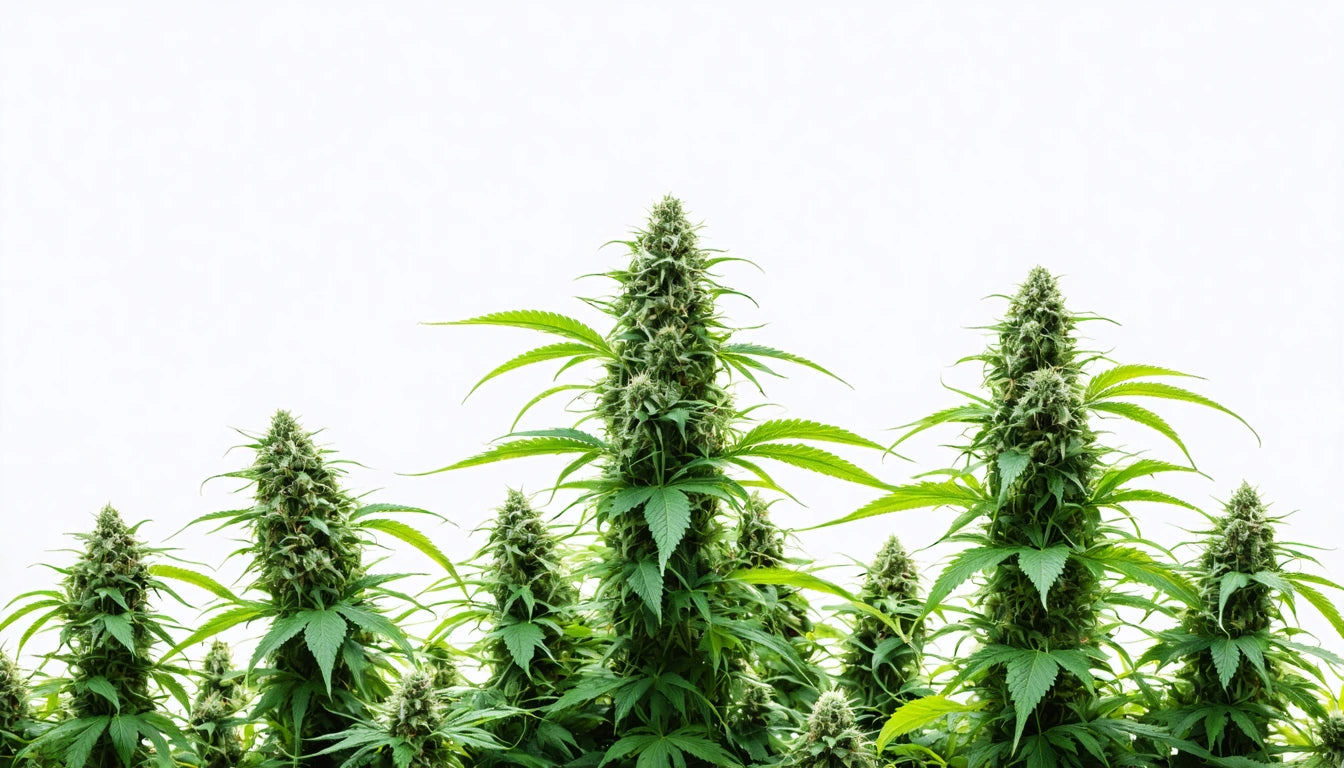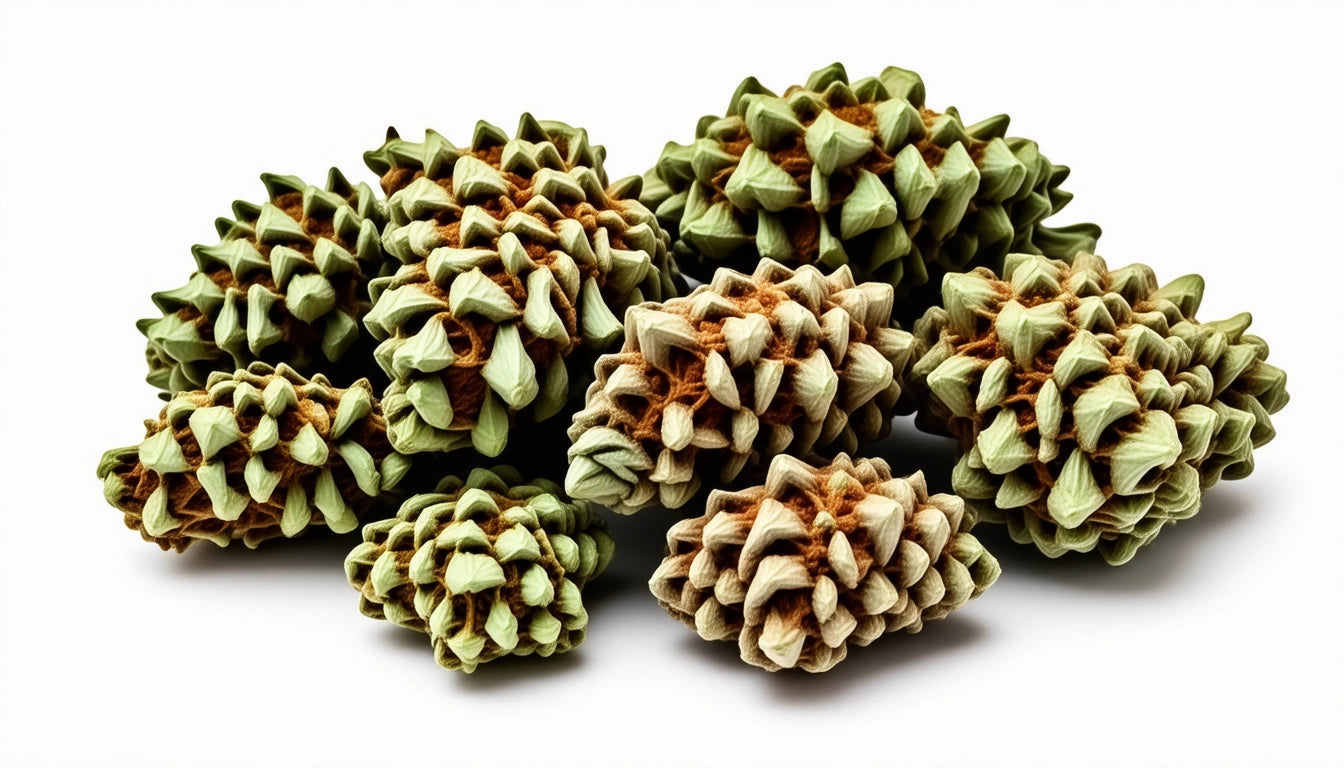Table of Contents
Understanding VPD Charts: A Beginner's Guide
Vapor Pressure Deficit (VPD) is a critical measurement that can significantly impact plant health and growth rates. Learning how to read a VPD chart is essential for cultivators looking to optimize their growing environments. This guide breaks down the fundamentals of VPD charts and provides practical instructions for implementing this knowledge in your cultivation practices.
What is VPD and Why It Matters
VPD represents the difference between the amount of moisture in the air and how much moisture the air can hold when saturated. In simpler terms, it measures the air's drying power, which directly affects how plants transpire and take up nutrients. When VPD levels are optimal, plants can efficiently move water from their roots through their stems and out through their leaves.
Understanding VPD is crucial because:
- It affects nutrient uptake efficiency
- It influences transpiration rates
- It can help prevent pest and disease issues
- It optimizes growth rates at different stages of plant development
As noted in this resource on optimal VPD levels, different growth stages require different VPD ranges for best results.
Key Components of VPD Charts
Before learning how to read a VPD chart, it's important to understand its key components:
Temperature Axis
Typically displayed along the horizontal axis (x-axis), temperature readings are usually shown in both Fahrenheit and Celsius.
Relative Humidity Axis
Usually displayed along the vertical axis (y-axis), relative humidity (RH) is shown as a percentage from 0% to 100%.
VPD Zones
Most charts use color coding to indicate ideal VPD ranges for different growth stages:
- Blue/Green zones: Lower VPD values ideal for clones and seedlings
- Yellow/Orange zones: Medium VPD values suitable for vegetative growth
- Red zones: Higher VPD values optimal for flowering stages
How to Read a VPD Chart Step-by-Step
Learning how to read a VPD chart involves understanding the relationship between temperature, humidity, and plant growth stages:
Step 1: Locate Your Current Environmental Conditions
Measure the temperature and relative humidity in your grow space using reliable instruments. Find these values on your chart by locating the temperature on the x-axis and the relative humidity on the y-axis.
Step 2: Identify the Intersection Point
Follow both values until they intersect on the chart. This intersection point represents your current VPD value, usually measured in kilopascals (kPa).
Step 3: Determine if Your VPD is in the Optimal Zone
Check if your intersection point falls within the recommended zone for your plants' current growth stage. For example, seedlings typically thrive in VPD ranges of 0.4-0.8 kPa, while flowering plants prefer 0.8-1.2 kPa.
Interpreting VPD Values for Cultivation Success
Understanding what VPD values mean for your plants is crucial for successful cultivation:
Too Low VPD (Below 0.4 kPa)
When VPD is too low, plants transpire slowly, which can lead to:
- Reduced nutrient uptake
- Slower growth
- Increased risk of mold and fungal issues
- Root development problems
Optimal VPD (0.4-1.2 kPa, depending on growth stage)
When VPD is in the optimal range, plants experience:
- Efficient transpiration
- Proper nutrient uptake
- Healthy growth rates
- Reduced susceptibility to pests and diseases
Too High VPD (Above 1.2 kPa)
When VPD is too high, plants may experience:
- Excessive transpiration leading to water stress
- Leaf curling or wilting
- Stunted growth
- Nutrient deficiencies due to limited uptake
Proper equipment is essential for monitoring and maintaining optimal growing conditions. Many cultivators use automated environmental control systems alongside their growing equipment to maintain precise VPD levels throughout all growth stages.
Adjusting Your Grow Environment Based on VPD Readings
Once you understand how to read a VPD chart and interpret the values, you can make informed adjustments to your growing environment:
To Increase VPD (if too low):
- Increase temperature
- Decrease relative humidity using dehumidifiers
- Improve air circulation with fans
- Consider using heaters during cooler periods
To Decrease VPD (if too high):
- Decrease temperature using cooling systems
- Increase relative humidity with humidifiers or misters
- Reduce intense light exposure
- Water more frequently if necessary
As explained in this guide on understanding measurements, precision is key when making environmental adjustments based on VPD readings.
Common VPD Reading Mistakes to Avoid
Even experienced growers can make mistakes when interpreting VPD charts:
Using Inaccurate Measurement Tools
Low-quality hygrometers and thermometers can provide inaccurate readings, leading to improper VPD calculations. Always calibrate your instruments regularly.
Ignoring Leaf Temperature
Most VPD charts use ambient air temperature, but leaf temperature (which can be several degrees lower than air temperature) is what truly matters for transpiration. Consider using infrared thermometers to measure leaf temperature for more accurate VPD calculations.
Not Accounting for Microclimates
VPD can vary throughout a grow space. Measure conditions at multiple locations, especially at the canopy level where it matters most.
Overlooking Growth Stage Requirements
Different growth stages require different VPD ranges. What works for flowering plants may stress seedlings. Always adjust your target VPD based on your plants' current stage.
VPD Technology Advancements and Future Applications
The cannabis cultivation industry continues to evolve with new technologies that make VPD monitoring and management more accessible and precise. Advanced environmental controllers now automatically adjust temperature and humidity to maintain optimal VPD throughout the day and night cycles.
Machine learning algorithms are being developed to predict plant responses to specific VPD conditions, allowing for truly customized growing environments. These systems can analyze historical data alongside real-time measurements to make micro-adjustments that optimize plant health and yield.
As our understanding of plant physiology deepens, VPD management will likely become even more sophisticated, with targeted recommendations for specific cannabis strains and phenotypes. Learning how to read a VPD chart today prepares cultivators for these advancements while immediately improving current growing practices.











Leave a comment
All comments are moderated before being published.
This site is protected by hCaptcha and the hCaptcha Privacy Policy and Terms of Service apply.